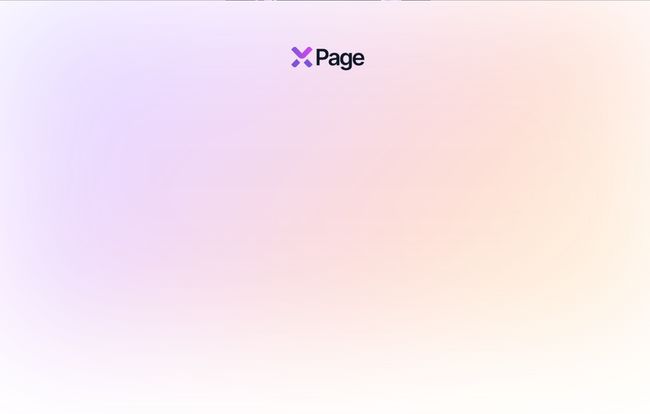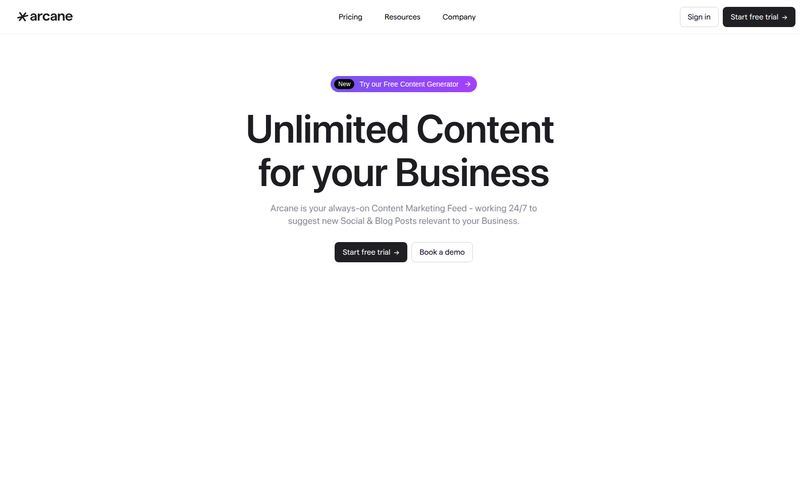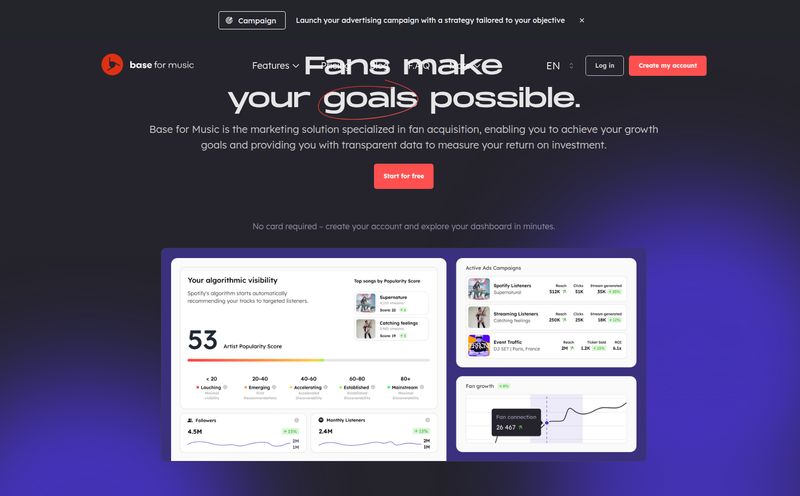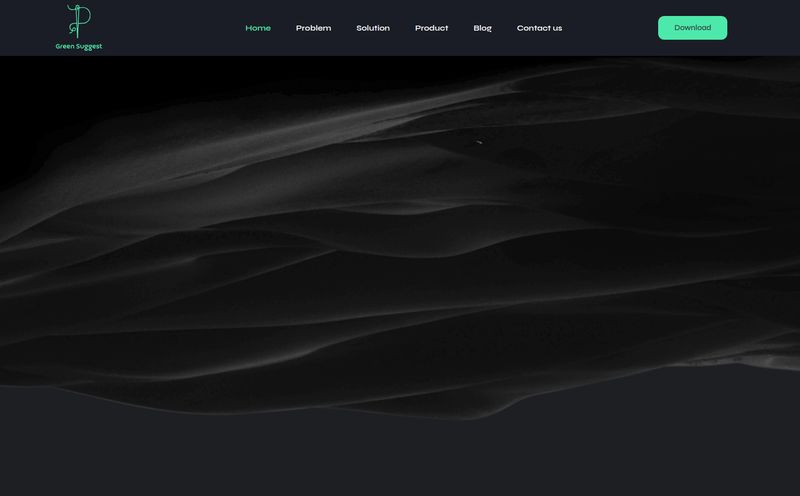Let’s have a little heart-to-heart. You and me. As someone who’s been neck-deep in the SEO and traffic generation world for years, I can tell you one ugly truth: I hate building landing pages. I really do. It’s a tedious, soul-sucking process that involves far too many hours staring at a screen, tweaking padding by one pixel, and A/B testing button colors until my eyes bleed. It’s the digital equivalent of trying to assemble IKEA furniture in the dark, with the instructions in a language you don’t speak.
We all know we need them. A killer landing page can be the difference between a campaign that soars and one that sinks like a stone, taking your ad spend with it. It’s where traffic converts into treasure. But the process of getting there? Ugh. It's a massive bottleneck for so many e-commerce store owners, especially the solopreneurs and small teams out there. So when I heard about an AI tool called xPage that promised to generate high-converting e-commerce landing pages with just a few clicks, my ears perked up. But I was also skeptical. We’ve all seen the over-hyped AI tools that promise the world and deliver a blurry, unusable mess.
So, I decided to take it for a spin. For you, for me, for anyone who's ever wanted to throw their laptop out the window over a misaligned CTA button.

Visit xPage - AI Ecommerce Landing Page Generator
What on Earth is xPage Anyway?
In a nutshell, xPage is an AI Ecommerce Landing Page Generator. You feed it some basic information about your product, and it spits out a complete, ready-to-publish landing page. The whole idea is to cut out the designer and the developer (and the copywriter, to an extent) from the equation, letting you go from product idea to live campaign in minutes, not days.
It’s built specifically with platforms like Shopify and Woocommerce in mind, which is a big plus. It's not trying to be a generic, one-size-fits-all website builder; its heart is in e-commerce, and that focus is pretty obvious from the get-go. This is particularly interesting for the dropshipping community, where speed and the ability to test multiple products quickly are absolutely paramount.
Why Most Landing Page Builders Give Me Anxiety
The problem with a lot of page builders is that they still require a ton of manual work. Sure, they’re “drag and drop,” but you still need to have a designer's eye. You need to write compelling copy. You need to understand conversion rate optimization (CRO) principles. They give you the bricks, but you still have to be the architect and the builder. It's a lot of hats to wear.
I’ve seen brilliant entrepreneurs with fantastic products fail to get traction because their landing pages just didn't connect. The headline was weak, the images were off, the call-to-action was buried. This is where the promise of AI gets really exciting. What if a tool could analyze thousands of successful pages and automatically apply those winning principles to your product? That's the dream, right? An AI that acts as your in-house CRO expert, designer, and copywriter, all rolled into one.
Taking xPage for a Spin: The Nitty-Gritty
Alright, enough theory. Let’s talk about what it’s actually like to use this thing. I went in expecting a bit of a learning curve, but I was genuinely surprised.
A Deceptively Simple Start
Getting started is... well, simple. The user interface is clean. There aren’t a million buttons and confusing menus. You basically tell it what you're selling. The claim of “no coding required” is 100% accurate. You don’t need to know what HTML or CSS even stand for. If you can write an email, you can use xPage. This is a massive win for the less technically-inclined store owners among us.
The Magic of One-Click Shopify Integration
This is where I really started to get impressed. For anyone on Shopify, the integration is incredibly smooth. You can connect your store and import products directly. I tested this with a demo product, and it pulled the name, images, and description effortlessly. From there, the AI takes over, building out sections for features, benefits, social proof, and FAQs around your product. Once you’re happy with the generated page, you can import it directly into your Shopify store with a single click. No messing with code, no manual uploads. This feature alone is a huge time-saver and probably the tool's biggest selling point.
Templates That Don't Look… Well, Templated
My biggest fear with any template-based system is that the output looks generic. You can spot a basic Shopify theme from a mile away. xPage seems to understand this. It offers a good variety of modern, clean layouts that are designed for conversion. They feel more like custom designs than cookie-cutter templates. You can then regenerate sections or the whole page if you’re not feeling the first draft, which brings me to an important point about the regeneration limits (more on that later).
Let's Talk Money: The xPage Pricing Breakdown
Okay, the big question. What’s this going to cost? The pricing structure is pretty straightforward, which I appreciate. They offer both monthly and yearly plans, with a nice discount if you commit for the year.
| Plan | Monthly Price | Yearly Price (per month) | Key Features |
|---|---|---|---|
| Starter | $29 | $23 | 20 Pages/mo, 1 Store, 10 Regenerates |
| Pro | $49 | $39 | 100 Pages/mo, 5 Stores, 20 Regenerates |
| Enterprise | $149 | $119 | 500 Pages/mo, 15 Stores, 50 Regenerates |
My take? The Starter plan is perfect for a single-store owner just getting their feet wet and needing a few key pages for their main products or ad campaigns. The Pro plan, however, feels like the sweet spot. If you’re running multiple stores, or you're a dropshipper constantly testing new products, the 100-page limit and integrations for 5 stores is fantastic value for under $50. The Enterprise plan is clearly for agencies or power-sellers managing a large portfolio.
The Not-So-Perfect Parts: A Reality Check
No tool is perfect, and it’s important to be honest about the limitations. Right now, xPage is very Shopify-focused. They mention Woocommerce support is on the way, which is great, but if you’re on another platform like BigCommerce or Squarespace, you’re out of luck for now. This isn't really a con if you're a Shopify user, but it's something to be aware of.
The other thing is the regenerate limits. Each plan limits how many times you can hit that “regenerate” button to get a new version. This is understandable, as each generation costs them AI processing power. But for a perfectionist, you might feel a bit constrained. It forces you to be more decisive, which isn't necessarily a bad thing, but it's a limit nonetheless. You have to be mindful of how many times you're trying again.
So, Who is xPage REALLY For?
After playing around with it, I have a very clear picture of the ideal xPage user:
- The Time-Strapped Shopify Store Owner: You’re juggling product sourcing, marketing, and customer service. You don’t have 10 hours to dedicate to building a single landing page.
- The Agile Dropshipper: You need to launch and test pages for new products yesterday. Speed is your competitive advantage, and xPage gives you that in spades.
- The Non-Technical Marketer: You know what a good landing page needs, but you don't have the coding or design skills to build it from scratch. This tool bridges that gap.
- Small Agencies: An agency could use the Enterprise plan to quickly mock up and deploy pages for multiple clients, dramatically speeding up their workflow.
Frequently Asked Questions About xPage
Is xPage actually easy to use for a beginner?
Yes, absolutely. I'd say it's one of the easiest tools of its kind I've seen. The workflow is intuitive, and the lack of a complex editor means you can't really break anything. It’s designed for simplicity.
Does xPage work with Woocommerce?
According to their information, Woocommerce integration is on the roadmap and coming soon. As of right now, its primary integration is with Shopify. It's best to check their site for the latest updates on this.
How much can I customize the AI-generated pages?
The customization comes more from regeneration than granular editing. You guide the AI with your product info and can regenerate sections you don't like. It’s not a pixel-perfect editor like Figma or a traditional page builder, it's more about letting the AI do the heavy lifting based on your prompts.
Is there a free trial for xPage?
Based on the pricing information available, there doesn't appear to be a free trial. The entry point is the Starter plan. This is pretty common for AI tools that have significant costs for every generation.
How good is the AI-written copy?
From my tests, it's surprisingly good! It's solid B+ to A- copy. It’s certainly better than the generic placeholder text you get with most themes. I'd say it's a fantastic starting point. You might want to tweak a headline or a bullet point to better match your brand voice, but you won't be starting from a blank page.
Is xPage worth it for a very small store with just a few products?
I think so. Consider the cost of a single freelancer to build one landing page—it could be several hundred dollars. For $29, you can create up to 20. If even one of those pages increases your conversion rate for a paid ad campaign, the tool pays for itself almost instantly. It’s an investment in efficiency and potentially higher revenue.
My Final Verdict on xPage
I went in skeptical, and I'm coming out pretty impressed. xPage isn't trying to be the most complex, feature-packed page builder on the market. Instead, it’s a focused, powerful tool that solves a very real, very painful problem for ecomerce businesses: creating high-quality landing pages quickly and without technical skills.
It's like having a junior designer and copywriter on call 24/7 for a fraction of the price. It removes the friction between having a great product and showing it to the world in the best possible light. If you're on Shopify and you've ever felt the pain of the landing page bottleneck, I genuinely think xPage is worth a look. It might just be the aspirin you've been searching for.

![Cre[ai]tion](https://files.declom.com/Cre-ai-tion_featured.jpg?)

